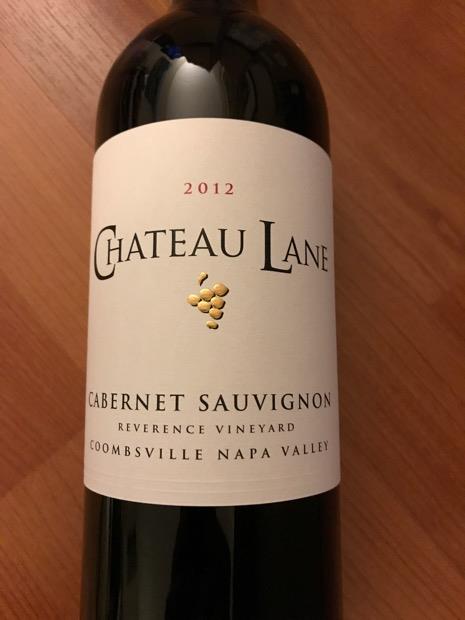
External search
Google (images)
Wine Advocate
Wine Spectator
Burghound
Wine-Searcher
Vintages
2012
2011
From this producer
Show all wines
All tasting notes
|
| Drinking Windows and Values |
| Drinking window: Drink between 2017 and 2021 (based on 2 user opinions) |
| Community Tasting History |
| Community Tasting Notes (average 92.3 pts. and median of 92 pts. in 7 notes) - hiding notes with no text | | | Tasted by KeyWestSunsets on 12/25/2020 & rated 95 points: Stellar California Cabernet.
Tobacco, leather very pronounced. Compost…shiitake mushroom, vegetation: Terragon thyme and eucalyptus , cedar.. blood oranges, currants, green peppercorn-very drying, very Terpine..medium plus on tannins
Tasting comments made by sommelier neighbor who brought it over for Christmas dinner, decanted it while our prime rib was cooking. Very very enjoyable wine! (364 views) | | | Tasted by Nbkat8 on 9/21/2019 & rated 91 points: This is definitely not a pop n pour wine, it took at least an hour to start showing itself. Trying to describe the taste i came away with a slightly sweet stewed cinnamon apple component, overall more earthy tones than fruit. Different than the fruit driven Washington Cabs i enjoy so much. After letting breath for quite a while it became quite good. (648 views) | | | Tasted by Yack Man on 6/15/2018 & rated 93 points: I decided to try this wine in view of the fruit Coombsville source. I open a bottle and I just had to taste it early in the day. Great color of garnet intertwined with purple. On the nose, earthy components and soil notes. On the palate, pretty acidic which I find very is very characteristic of many 2012 Cabs, so clearly this is not a pop and pour Cab and is probably better enjoyed with food. Dark purple fruit, sour cherry, dark tart blackberries, blueberries and elements of earthy funk. I detect some substantive elements here, but this wine is very coiled, tight, not revealing too much even after several hours of a slow ox. I expect this wine should age and will improve, but It's not there at this time. 90 Points now and I will try some with dinner - more to come, IF it is worth the effort.
With a meal, this wine is significantly better. It is amazing how the flavors in this wine come to life with food. The suppressed aspects of this wine previously described have emerged and come to life making this wine enjoyable. I will give it another 2+ points. Lesson learned on this wine, I am impressed. (1623 views) |
| Cabernet SauvignonCabernet Sauvignon is probably the most famous red wine grape variety on Earth. It is rivaled in this regard only by its Bordeaux stablemate Merlot, and its opposite number in Burgundy, Pinot Noir. From its origins in Bordeaux, Cabernet has successfully spread to almost every winegrowing country in the world. It is now the key grape variety in many first-rate New World wine regions, most notably Napa Valley, Coonawarra and Maipo Valley. Wherever they come from, Cabernet Sauvignon wines always seem to demonstrate a handful of common character traits: deep color, good tannin structure, moderate acidity and aromas of blackcurrant, tomato leaf, dark spices and cedarwood.
Used as frequently in blends as in varietal wines, Cabernet Sauvignon has a large number of common blending partners. Apart from the obvious Merlot and Cabernet Franc, the most prevalent of these are Malbec, Petit Verdot and Carmenere (the ingredients of a classic Bordeaux Blend), Shiraz (in Australia's favorite blend) and in Spain and South America, a Cabernet – Tempranillo blend is now commonplace. Even the bold Tannat-based wines of Madiran are now generally softened with Cabernet SauvignonUSAAmerican wine has been produced since the 1500s, with the first widespread production beginning in New Mexico in 1628. Today, wine production is undertaken in all fifty states, with California producing 84% of all U.S. wine. The continent of North America is home to several native species of grape, including Vitis labrusca, Vitis riparia, Vitis rotundifolia, and Vitis vulpina, but the wine-making industry is based almost entirely on the cultivation of the European Vitis vinifera, which was introduced by European settlers. With more than 1,100,000 acres (4,500 km2) under vine, the United States is the fourth-largest wine producing country in the world, after Italy, Spain, and France.California2021 vintage: "Unlike almost all other areas of the state, the Russian River Valley had higher than normal crops in 2021, which has made for a wine of greater generosity and fruit forwardness than some of its stablemates." - Morgan Twain-Peterson Napa Valley Napa Valley Wineries and Wine (Napa Valley Vintners) |
|




